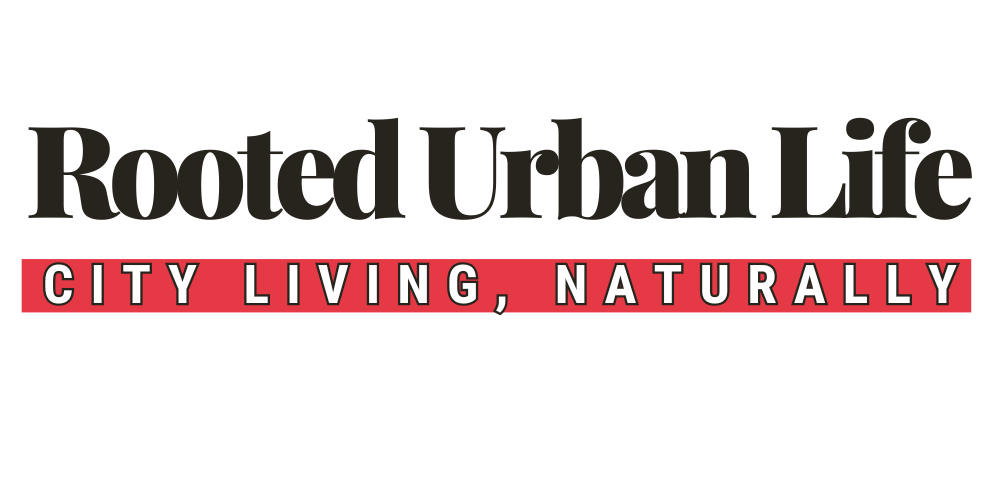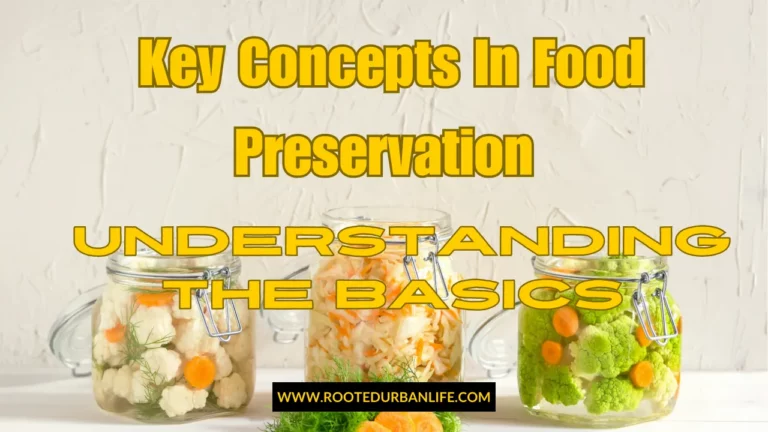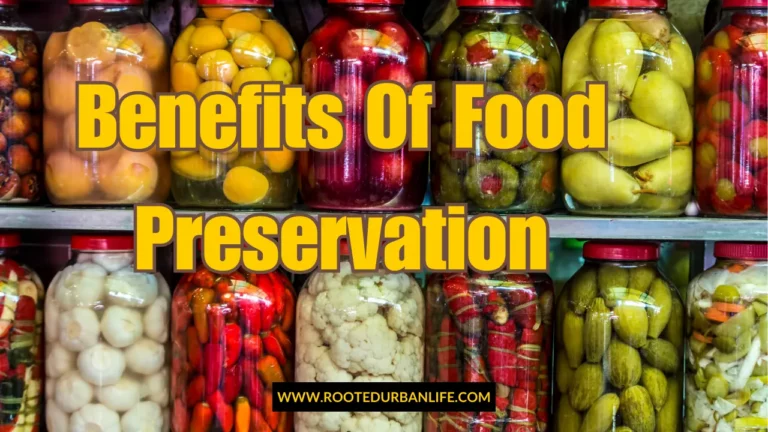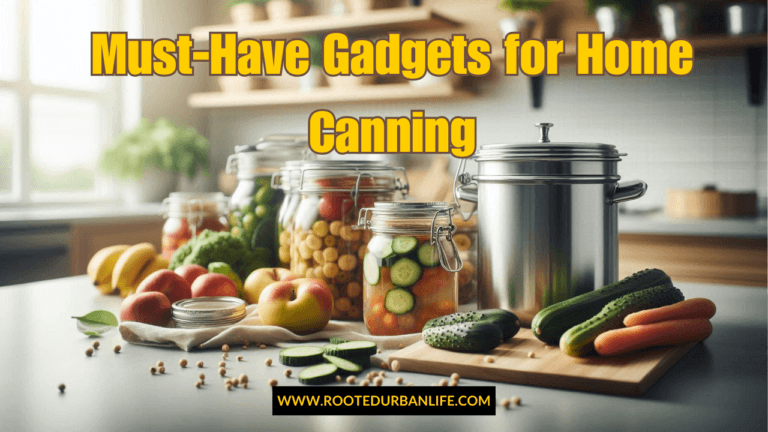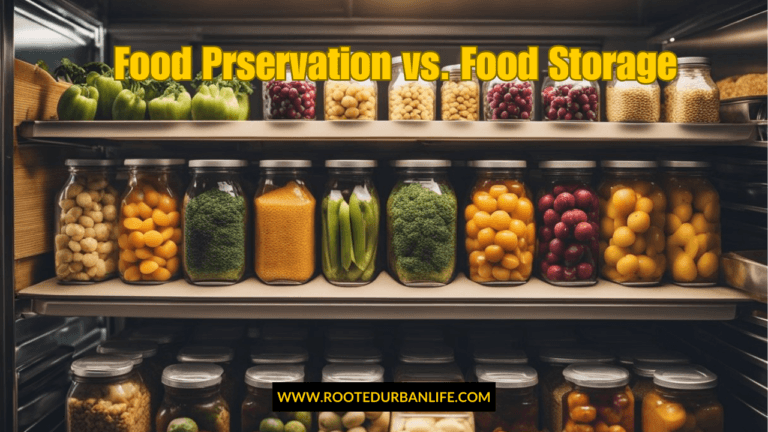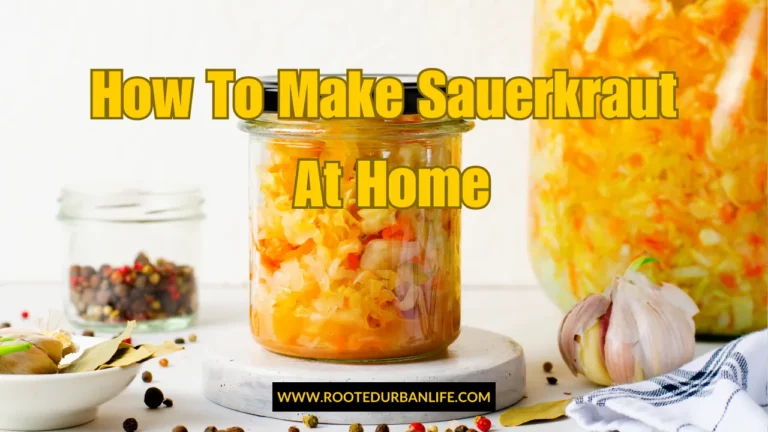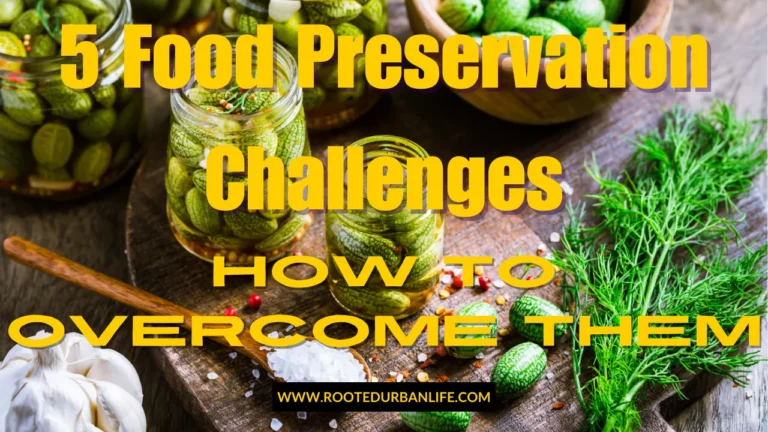10 Common Canning Mistakes And How To Avoid Them
Home canning is an exciting way to preserve fresh foods and save money, but it’s also a process that requires careful attention to detail. Have you ever wondered why some jars don’t seal or why certain foods aren’t safe to can? Mistakes happen, but with the right knowledge, you can avoid the most common pitfalls nd enjoy safe, delicious results.
This guide will walk you through the most common canning mistakes, practical tips to avoid them, and advice for making your canning process both safe and successful. Whether you’re a beginner or looking to refine your skills, this comprehensive resource will build your confidence in home food preservation.
Read more: 10 Common Canning Mistakes And How To Avoid Them
If you’re new to canning, it’s normal to feel overwhelmed by all the steps involved. The good news is that most mistakes are easy to avoid once you understand the basics. Some of the most frequent errors include skipping proper sterilization of jars and lids, failing to measure headspace accurately, and improperly sealing jars. By addressing these issues step-by-step, you’ll be better equipped to achieve consistent, safe results.

Common Canning Mistakes (and How to Avoid Them)
Skipping Proper Sterilization
Sterilizing jars and lids is one of the most critical steps in canning. Even if your jars look clean, they may harbor bacteria or debris that can spoil your food.
Always wash jars and lids in hot, soapy water. Boil jars for at least 10 minutes to make sure they are fully sterilized. Keep them hot until you are ready to fill them. If you’re short on time, use your dishwasher’s sterilization cycle.
For the lids, simmer them in hot water for a few minutes. Do not boil them, as this may damage the sealing compound.
Skipping this step can lead to mold, contamination, or even illness. Taking the extra time to sterilize properly is worth it.
Using Untested Recipes
Canning recipes are more than just instructions—they’re carefully tested for safety and reliability. Altering a recipe or using one that hasn’t been vetted can result in unsafe food.
Always use recipes from trusted sources like the USDA or Ball Canning and avoid ingredient swaps, especially with low-acid foods like vegetables or meats.
Tested recipes maintain the balance of acid, sugar, and salt to prevent harmful bacteria growth. Even small changes can throw off this balance and put your health at risk.
Ignoring Headspace Requirements
Headspace might seem like a minor detail, but it’s crucial for a proper seal. Too much or too little space can cause jars to overflow or fail to seal.
You can use a headspace measuring tool or ruler for precision and follow the recommended headspace for each type of food.
Use a headspace measuring tool or ruler to ensure accuracy. Follow these guidelines:
- 1/4 inch for jams and jellies.
- 1/2 inch for fruits and pickles.
- 1 inch for low-acid foods like meats.
Removing air bubbles after filling jars is equally important. Use a non-metallic utensil to gently release trapped air and ensure a good seal.
Not Adjusting for Altitude
Did you know that water boils at a lower temperature at higher altitudes? This means your food may not process correctly without adjustments.
If you live above 1,000 feet, increase processing time or pressure according to guidelines. For example, at 3,000 feet, you may need to add 5-10 minutes to your processing time. Altitude adjustments are essential for food safety.
Overlooking Acid Levels
Acid levels are a critical factor in canning safety. Foods with high acidity, like fruits and pickles, can be processed in a water bath canner. Low-acid foods, such as meats and vegetables, require a pressure canner to reach the temperatures needed to kill harmful bacteria.
Follow recipes that specify the correct canning method for your food and when in doubt, add lemon juice or vinegar to boost acidity for borderline foods like tomatoes. Understanding acid levels is essential for determining whether to use a water bath or pressure canner.
Improper Sealing
A failed seal can ruin your hard work, allowing air and bacteria to enter the jar and spoil your food.
Always use new lids—they’re designed for single use only. Make sure to wipe jar rims clean to remove any food particles or moisture and tighten bands just enough to hold the lid in place without overtightening.
After jars cool, press the center of the lid. If it doesn’t pop back, your jar is properly sealed.
Underestimating Botulism Risk
Botulism is a rare but serious risk when canning, especially with low-acid foods. The bacteria that cause botulism thrive in improperly canned, low-oxygen environments.
Always use a pressure canner for low-acid foods, process jars for the full recommended time to ensure all bacteria are destroyed and regularly check your pressure canner’s gauge for accuracy.
Improper Cooling and Storage
Canning doesn’t end when you remove jars from the canner. Cooling and storing your jars correctly is essential for preserving your food.
Let jars cool undisturbed for 12-24 hours. Moving them too soon can disrupt the seal. Store them in a cool, dark place between 50°F and 70°F and check seals before storing. If a lid flexes when pressed, refrigerate the jar and consume it quickly.
Label jars with the contents and date to keep your pantry organized and ensure you use older items first
Reusing Old Lids
Reusing lids may seem like a way to save money, but it’s a risky practice. Old lids often lose their sealing properties, leading to failed seals and spoiled food.
Always use new lids for each canning session and keep extra lids on hand to avoid running out mid-session.
Overfilling the Canner
Filling your canner beyond its capacity can prevent proper heat circulation, leaving some jars underprocessed.
Follow your canner’s manual to determine how many jars it can safely hold and avoid stacking jars unless your canner is designed for it. Use a rack between layers to ensure even heat distribution.
Properly loading your canner helps ensure all jars are processed safely and evenly.

Advanced Canning Techniques and Special Cases
Canning high-density foods and using steam canners require special care. Following specific guidelines helps you avoid mistakes and ensures safe and tasty results. Here are important points to consider.
Canning High-Density and Complex Foods
When canning high-density foods, such as meats and dense vegetables, you need to use a pressure canner. A pressure canner reaches higher temperatures than a water bath canner, making it safer for low-acid foods.
Make sure to cut foods into uniform sizes. This helps with even heat penetration, ensuring safety. Follow the recommended processing times for each food type. Refer to trusted canning guides for accurate times and pressure levels.
If you are making jellies or preserves, remember they should also follow specific guidelines for bulking and sugar content. Using the right pH level is essential in all canning processes, especially with complex recipes.
Using Steam Canners
Steam canners are an alternative to traditional water bath methods. They use steam instead of boiling water, which saves time and energy.
You need to make sure to use a steam canner that fits your jars and use the right amount of water as recommended by the manufacturer. Keep an eye on the temperature gauge to maintain the correct heat level.
Processing times can vary based on what you are canning. For instance, acidic foods like tomatoes and fruits usually take less time than low-acid foods. Always check the processing times specific to the food you are canning to ensure safety.
Frequently Asked Questions
The topics below address key safety concerns and best practices to help you can food safely.
What happens if you have too much headspace after canning?
Too much headspace can prevent a proper seal, cause food discoloration, and lead to unsafe processing.
Can you boil jars too long when canning?
Yes, over-boiling can affect food texture, reduce nutrients, and compromise acidity in some cases.
Can jars touch each other when canning?
No, jars should not touch, as this can cause breakage and uneven heat distribution. Use a rack to space them.
What should not be canned at home to ensure safety?
Certain foods are not safe for home canning. This includes low-acid foods like most vegetables, meats, and seafood when they are not processed in a pressure canner. Foods like dairy products, pumpkin puree, and fresh garlic also pose risks.
How can you tell if home-canned goods are safely sealed?
Check the lids of your jars. A properly sealed lid will be concave and will not move when pressed in the center. If the lid pops up when you press down, the jar did not seal correctly and should be refrigerated or reprocessed.
What is the correct procedure for removing jars from a pressure canner?
When removing jars from a pressure canner, first turn off the heat and allow the canner to cool completely.
Once it’s safe, remove the weight or petcock to release the pressure. Then, use a jar lifter to pull out each jar carefully.
What are the risks of botulism in home-canned foods and how can it be prevented?
Botulism is a serious risk in home canning, especially if low-acid foods are improperly processed.
To prevent it, always follow tested recipes and process food for the correct amount of time and pressure. Make sure your equipment is clean and in good condition.
How long should you wait before consuming home-canned goods?
It’s best to wait at least 24 hours after canning before consuming your home-canned goods. This allows the seals to set properly. Always check the seals before eating.
Are there specific foods that are not suitable for pressure canning?
Yes, some foods should not be pressure canned. These include food items high in fat, such as meats with significant fat content and pies. Adding thickeners or dairy also makes foods unsafe for this method.
Key Takeaways
Sterilize jars and lids thoroughly to prevent contamination. Follow tested recipes to ensure proper acid levels and processing times. Measure headspace accurately and remove air bubbles to create a reliable seal.A djust for altitude to account for changes in boiling temperatures. ractice proper cooling and storage procedures to keep your canned goods safe and delicious. Avoid reusing lids and overfilling your canner for safe and consistent results.
Canning is more than just preserving food—it’s a way to connect with the seasons, create something with your own hands, and stock your pantry with homemade pride. Mistakes are part of the learning curve, but now you’re equipped to avoid the most common pitfalls.
By following tested recipes, paying attention to details like sterilization and headspace, and taking your time, you’ll not only ensure your food is safe to eat but also build skills that will last a lifetime. So grab your jars, roll up your sleeves, and start creating your own shelf-stable masterpieces! Share your favorite canning tips and stories in the comments, and don’t forget to subscribe to our blog.

